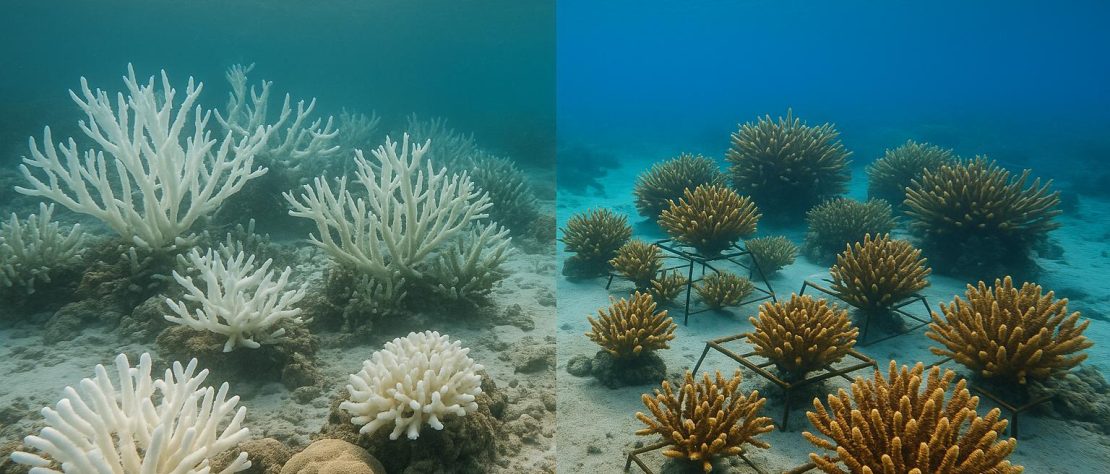Introduction
The Philippines, a Southeast Asian nation composed of over 7,000 islands, is celebrated for its extraordinary marine biodiversity. Among its many natural wonders, the coral species thriving in Philippine waters are particularly noteworthy. They not only contribute to the aesthetic allure of the region’s seascapes, but also play a critical role in sustaining the health of marine ecosystems and supporting the livelihoods of numerous coastal communities. This intricate tapestry of marine life underscores the rich biological diversity that thrives within these vibrant ecosystems.
Unveiling New Coral Species
In recent years, scientific expeditions have yielded remarkable findings, uncovering several previously unknown coral species within Philippine waters. These discoveries serve to reinforce the Philippines’ esteemed status as a global hotspot for marine biodiversity. Additionally, they underline the pressing need for further exploration and conservation initiatives to protect these invaluable resources.
Characteristics of Newly Discovered Corals
The newly identified coral species exhibit an array of distinctive characteristics that differentiate them from their more familiar counterparts. These corals often display an impressive range of vibrant colors, intricate patterns, and unique growth forms, contributing significantly to the aesthetic value of coral reefs. Beyond their visual appeal, these corals hold valuable insights into broader environmental changes and the evolutionary dynamics of marine life. Their study offers critical data that enhance our understanding of ecological responses to natural and anthropogenic changes.
Contributions to Marine Biodiversity
The identification of new coral species enriches our understanding of coral diversity and its evolutionary history. This knowledge is instrumental in shaping effective conservation strategies and informing policy decisions aimed at safeguarding these essential components of marine ecosystems. The enhanced understanding of coral diversity gained through these discoveries informs more nuanced and effective approaches to conservation, ensuring the long-term health and resilience of these habitats.
Scientific and Local Collaboration
These discoveries are the result of collaborative efforts among local researchers, scientists, and international experts. Such partnerships are crucial in carrying out comprehensive research and ensuring the effective preservation of marine habitats. Collaborative projects help bridge the gap between global scientific expertise and local ecological knowledge, facilitating a shared understanding of the unique challenges and opportunities within Philippine marine ecosystems. To learn more about ongoing research initiatives, you might explore scientific projects supported by organizations like Ocean Conservancy.
Conservation Efforts
In light of the myriad threats posed by climate change, pollution, and overfishing, the protection of these newly discovered coral species has become increasingly urgent. Conservation efforts in the Philippines emphasize the establishment of marine protected areas, the regulation of fishing practices, and the promotion of eco-friendly tourism. These strategies aim to mitigate the impacts of human activity and environmental changes on these fragile ecosystems.
Importance of Marine Protected Areas
Marine protected areas (MPAs) are critical tools for safeguarding coral reefs from destructive activities. By designating specific zones as protected, MPAs offer a sanctuary for marine life, allowing ecosystems to recover and thrive. By limiting harmful activities, such as overfishing and pollution, these areas play a key role in maintaining the health and resilience of coral reefs. For more information on the benefits and impact of MPAs, you can explore resources from organizations involved in global marine conservation initiatives, such as marine conservation organizations that work to protect ocean health worldwide.
Eco-Friendly Tourism and Community Engagement
In addition to the establishment of MPAs, promoting eco-friendly tourism is another essential component of conservation strategies in the Philippines. Eco-friendly tourism practices encourage visitors to appreciate and value marine biodiversity while minimizing their environmental impact. Through education and sustainable tourism opportunities, communities can be engaged in conservation efforts, fostering a culture of stewardship and sustainable development.
Adaptive Management and Policy Development
Conservation success relies heavily on adaptive management and the development of policies that reflect the latest scientific understanding. These policies must be dynamic, accommodating new discoveries and altering strategies as necessary to address emerging threats. Continuous monitoring and research, coupled with community involvement, allow for the iterative development of policies that effectively protect coral reefs and the livelihoods they support.
Conclusions
The recent discoveries of unique coral species in Philippine waters underscore the nation’s pivotal role in global marine biodiversity. These findings illuminate the critical importance of sustained research and robust conservation measures to ensure the health and resilience of these vital ecosystems. Through collaborative efforts at local, national, and international levels, there is a promising path forward for securing the future of these remarkable coral reefs for generations to come. Continued engagement with scientific communities and the effective implementation of adaptive management strategies will be essential in preserving this extraordinary natural heritage.

